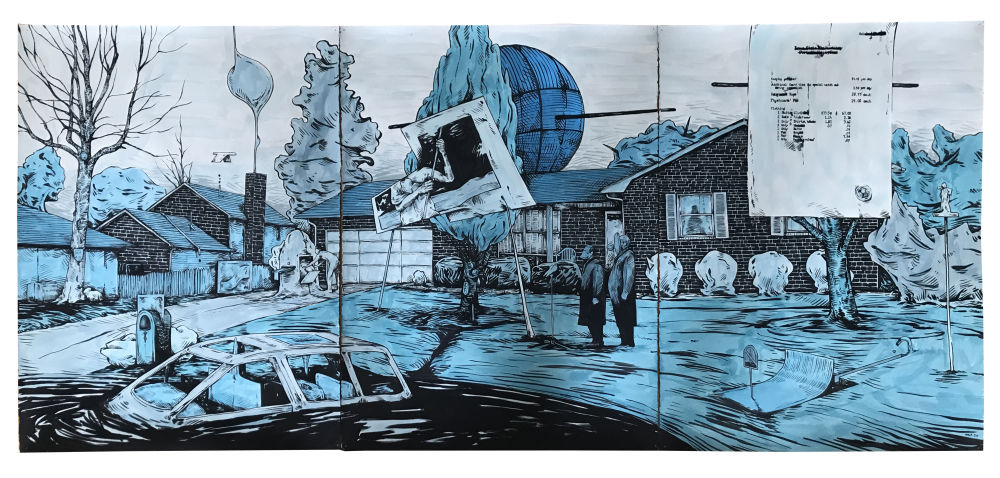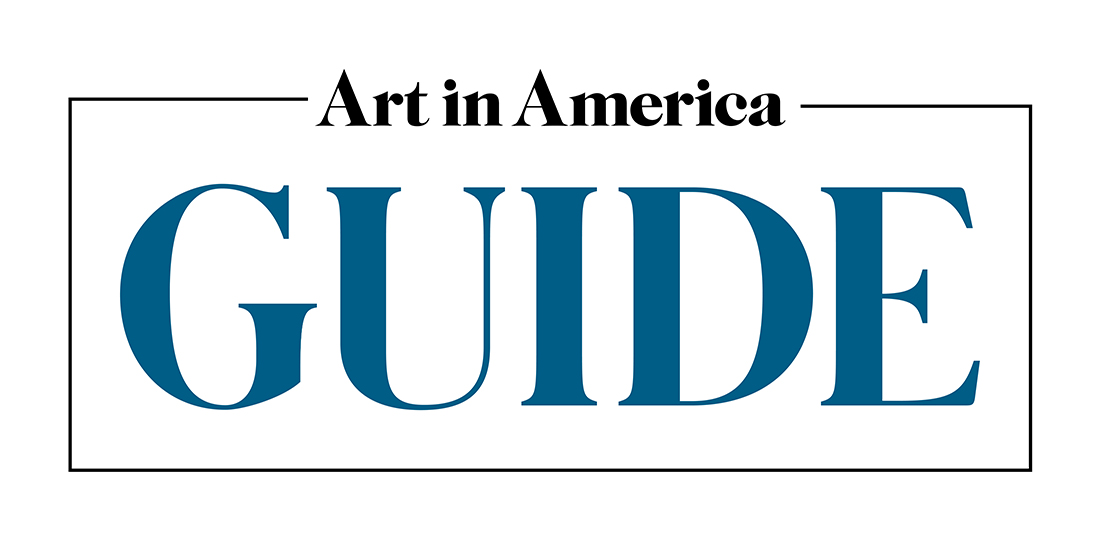
- This event has passed.
Look Again: A Survey of Contemporary Painting
August 15, 2020 - September 10, 2020

Hollis Taggart is pleased to announce the opening of Hollis Taggart Southport, a temporary gallery location in the heart of downtown Southport, Connecticut. The space will open on August 15 in the historically landmarked building at 330 Pequot Avenue, with the exhibition Look Again: A Survey of Contemporary Painting.
Featuring more than a dozen artists, the show explores the spectrum of approaches, techniques, and materials within contemporary painting practice and emphasizes in particular the erosion of traditional boundaries between artistic genres, styles, and modes. Look Again includes gallery artists William Buchina, Leah Guadagnoli, André Hemer, Kenichi Hoshine, Dana James, John Knuth, and Bill Scott, as well as Elizabeth Cooper, Bethany Czarnecki, Hiroya Kurata, Suchitra Mattai, Matt Phillips, and Devin Troy Strother. The gallery currently plans to maintain its Southport location until September 10, 2020.
“With our New York City locations still operating by appointment only, we wanted to give our artists, both those who are formally part of our program and those with whom we have long-standing relationships, another opportunity to show their work and connect with new audiences. The opening of our temporary location in Southport allows us to expand those networks of support and also to more actively engage with an audience and collector base that we have been building relationships with and cultivating for some time now,” said Hollis Taggart. “We are very excited to have visitors come through our doors in Southport, and are enthusiastic about the show that Paul Efstathiou, our Director of Contemporary Art, has put together.”
The artists featured in Look Again are inspired by a wide range of subjects and ideas. Kenichi Hoshine and Hiroya Kurata both draw on the moments, scenes, and images of their everyday lives. In Hoshine’s work, these elements become jumping-off points for wider imagined narratives, and in his recent abstract compositions he has been particularly drawn to theatrical sets and props. For Kurata, however, the past serves as a greater source of interest and a sense of nostalgia pervades his paintings, which combine both abstract and figurative elements. In his work, remembrances of childhood places and events are remade on the canvas—now filtered and presented through the lens of time. Memory is also an important aspect in Dana James’s work. In her abstract paintings, suburban landscapes and the images of Americana are translated into fluid forms, gestural lines, and fields of color—the original sources fading in and out of recognition much like a distant memory one can’t quite grasp. This visual sensation is enhanced by James’s mixture of desaturated oils and wax, which she applies to raw canvas.
Several artists in the exhibition use their personal history to examine broader themes of identity, history, and the contemporary social and political landscape. Suchitra Mattai—whose work embraces a wide range of media—draws on her family history as well as stories of indentured female laborers and slaves to question mainstream narratives of colonialism and uncover hidden and forgotten figures and events. Devin Troy Strother’s practice, which engages with the formal vocabularies of painting, collage, assemblage, and sculpture, likewise plays on and critiques issues related to race and the art historical canon. The madcap nature of many of Strother’s paintings and sculptures also connects with the work of William Buchina, who in his most recent paintings has explored the nature of figures gathered together, whether for religious ceremonies, political rallies, marshal interventions, or other communal happenings. Recontextualized and remixed into Surrealist-style landscapes, the figures offer a look into human behavior and the tribalistic ways in which people seek to meet their various and divergent needs, aspirations, and beliefs.
Engagement with the human body and one’s physical environment is another connective theme within Look Again. Bethany Czarnecki’s vibrant and sumptuous abstractions explore in particular the female form and its wider relationships to both physical and psychic space. The emotionality of Czarneck’s work is also evident in Bill Scott’s paintings, which are often inspired by nature, notions of escape and paradise, and our response to music and poetry. His works offer a space of meditation and repose. Leah Guadagnoli’s whimsical sculptural paintings, on the other hand, reference an eclectic array of architectural and design modes, from the curves and lines of Swahili architecture to the bold patterns and colors of The Memphis Group, and to most recently her garden and the landscapes of upstate New York, where she has been quarantining. These environments serve as touchstones in Guadagnoli’s works, which embrace both the formal qualities of painting and sculpture to create new, compelling effects. Architectural forms also compel Matt Phillips’s softly colored abstract compositions, which he develops organically on the canvas with self-made water-based pigments. Maps and quilts also offer points of departure in his work.
Several of the featured artists utilize unique techniques and processes to expand the boundaries of and the formal dialogues around abstraction. John Knuth is particularly recognized for his use of fly regurgitations to produce brilliant, seemingly luminescent, abstract paintings and globes. Honing this approach over many years, the artist challenges traditional notions of art making. In a distinctly different vein, André Hemer explores the confluence of digital and analog techniques within contemporary painting. Through a singular process that includes both digital scanning and a physical working of acrylic paint and pigment, Hemer creates tactile and colorful abstract works that capture the erosion between our in-person and digital experiences. Elizabeth Cooper’s paintings draw on the language of Abstract Expressionism, as she pours, splashes, and splatters paint atop swaths of flat monochromatic color fields. Although referential to the past, Cooper’s keen eye for color contrasts and use of neons and pastels make her canvases appear more like contemporary advertisements, extending the trajectory of the movement into the present.
About Hollis Taggart
Founded in 1979, Hollis Taggart presents significant works of American art, showcasing the trajectory of American art movements from the Hudson River School to American Modernism and the Post-War and Contemporary eras. Its program is characterized by a deep commitment to scholarship and bringing to the fore the work of under-recognized artists. The gallery has sponsored several catalogue raisonné projects, most recently for the American Surrealist artist Kay Sage, and has been instrumental in advancing knowledge of such compelling artists as Alfred Maurer, Arthur B. Carles, and more recently, Theodoros Stamos, Marjorie Strider and Michael (Corinne) West. In the summer of 2019, the gallery announced the formal expansion of its primary market business and focus on the presentation of contemporary work, operating under Hollis Taggart Contemporary. The gallery’s flagship space is located on W. 26th Street and its contemporary division is based at a secondary location on W. 25th Street. The gallery also has a private viewing and storage facility in the neighborhood. With 40 years of experience, Hollis Taggart is widely recognized by collectors and curators for its leadership, expertise, and openness, on matters of art history, and market trends and opportunities.
For more information, please contact:
Alina Sumajin, PAVE Communications & Consulting
alina@paveconsult.com / 646-369-2050
Image:
William Buchina (b. 1978)
Scenery in Blue #5, 2020
Ink on paper
30 x 67 1/4 inches (76.2 x 170.8 cm) (triptych)
